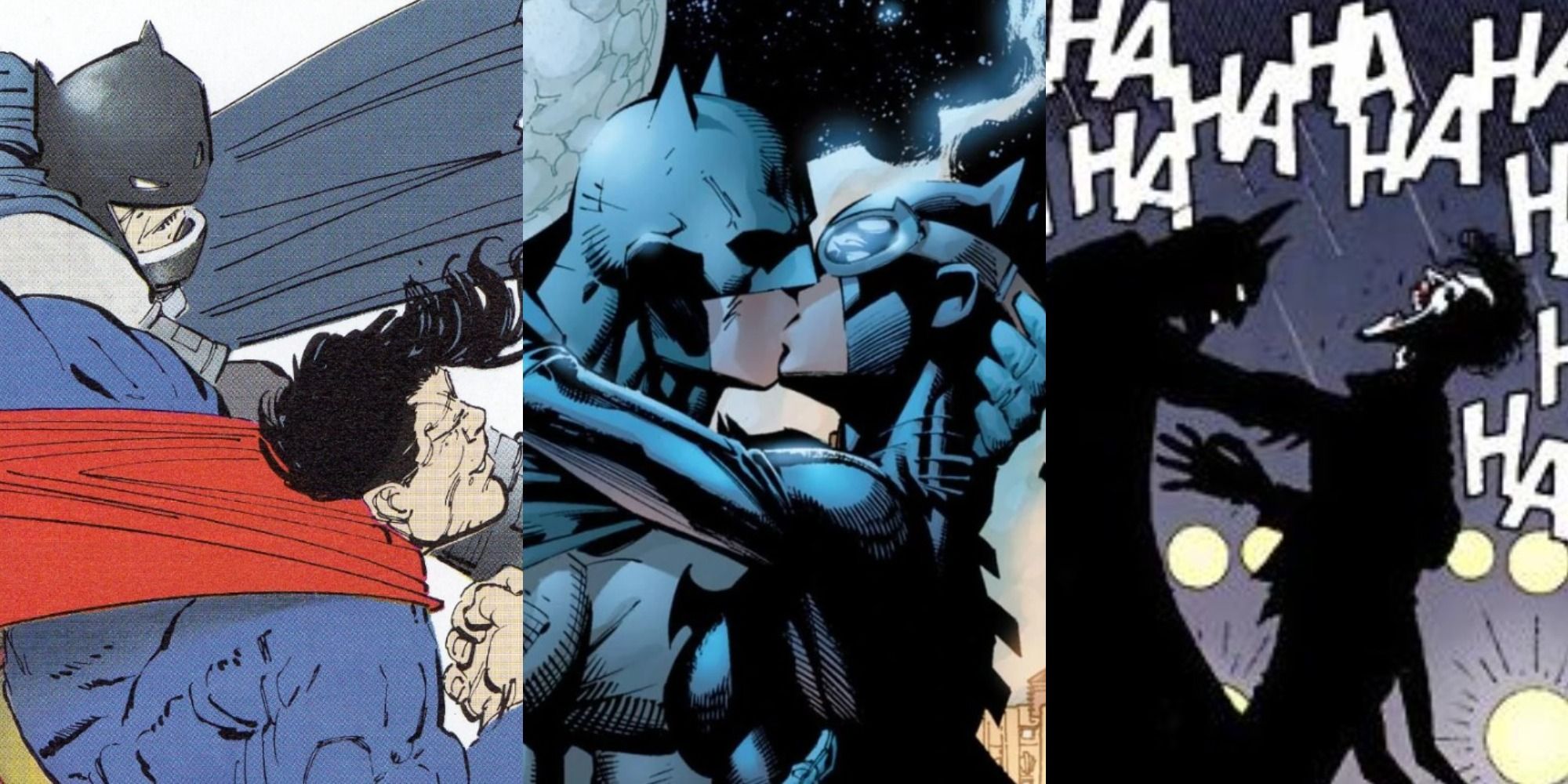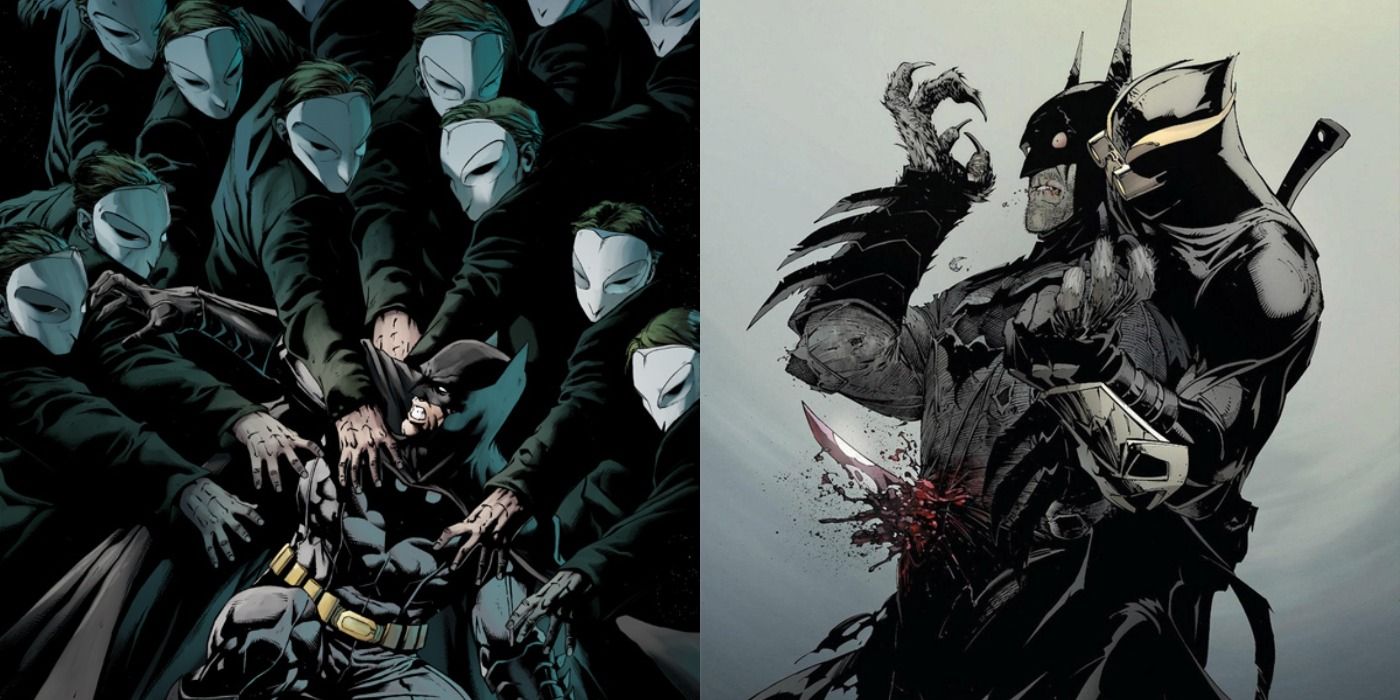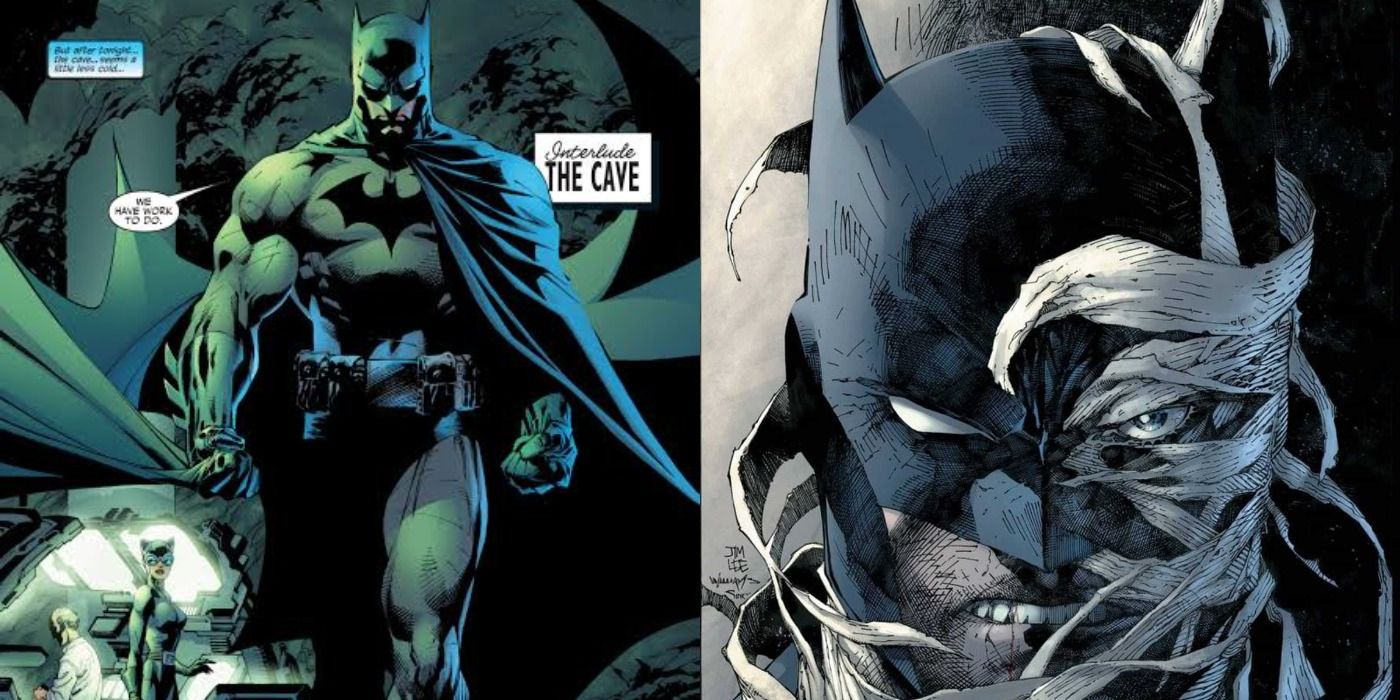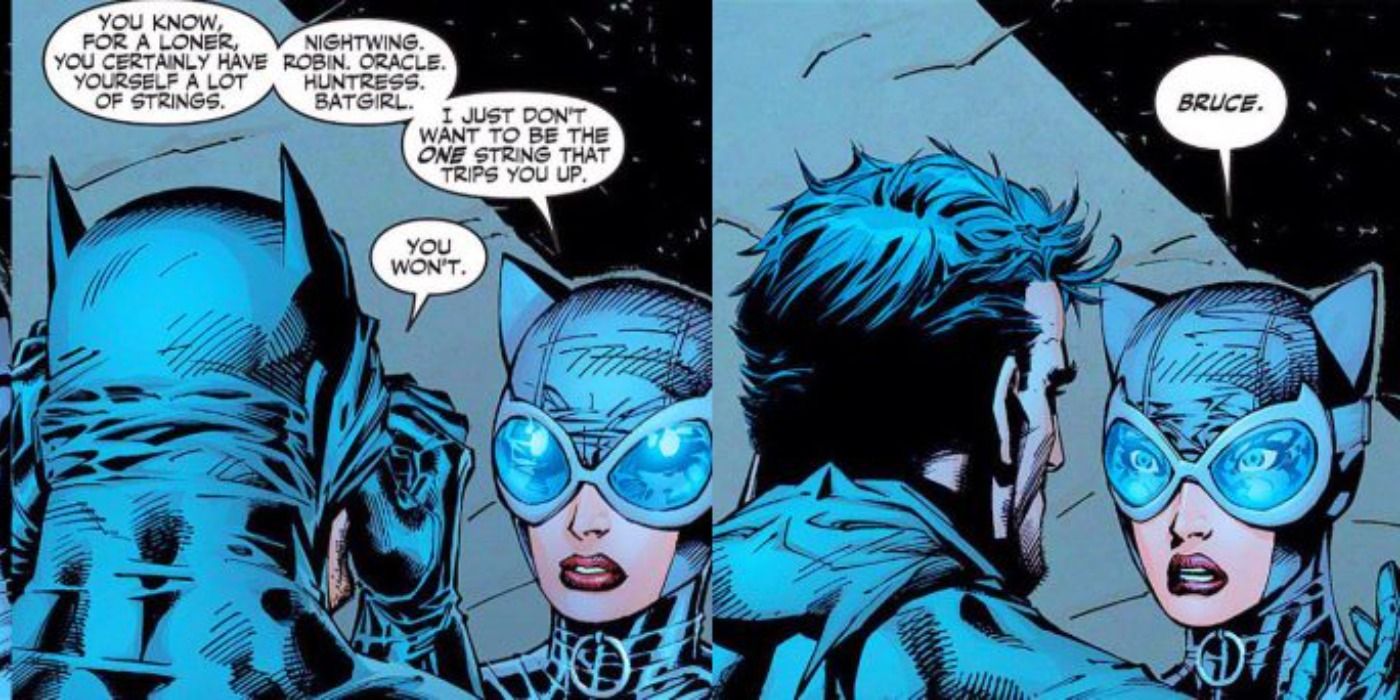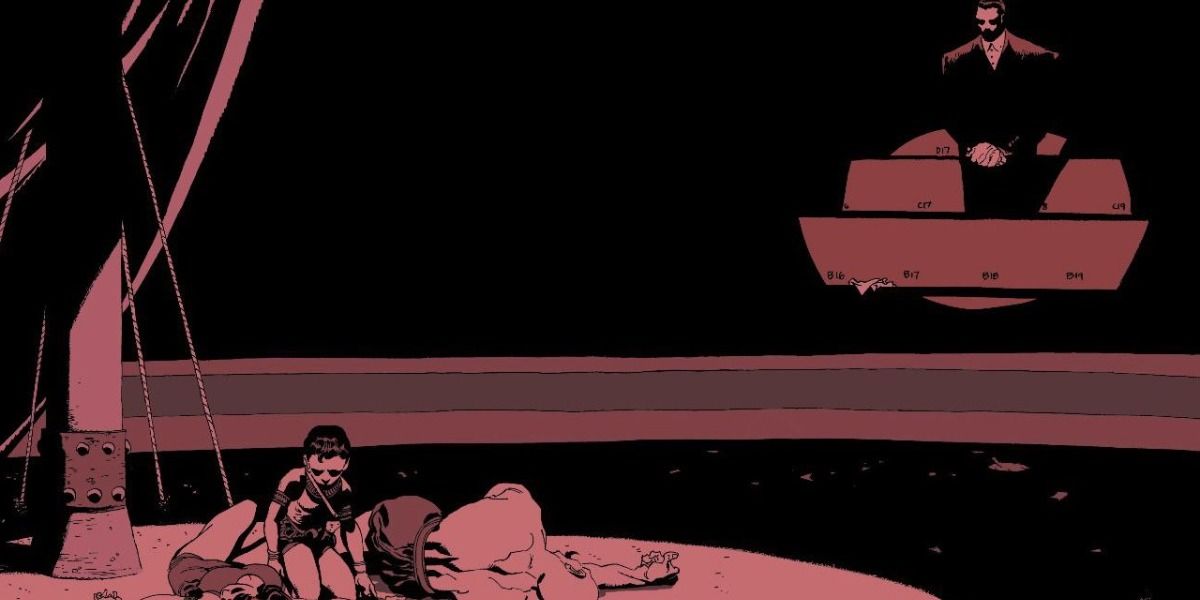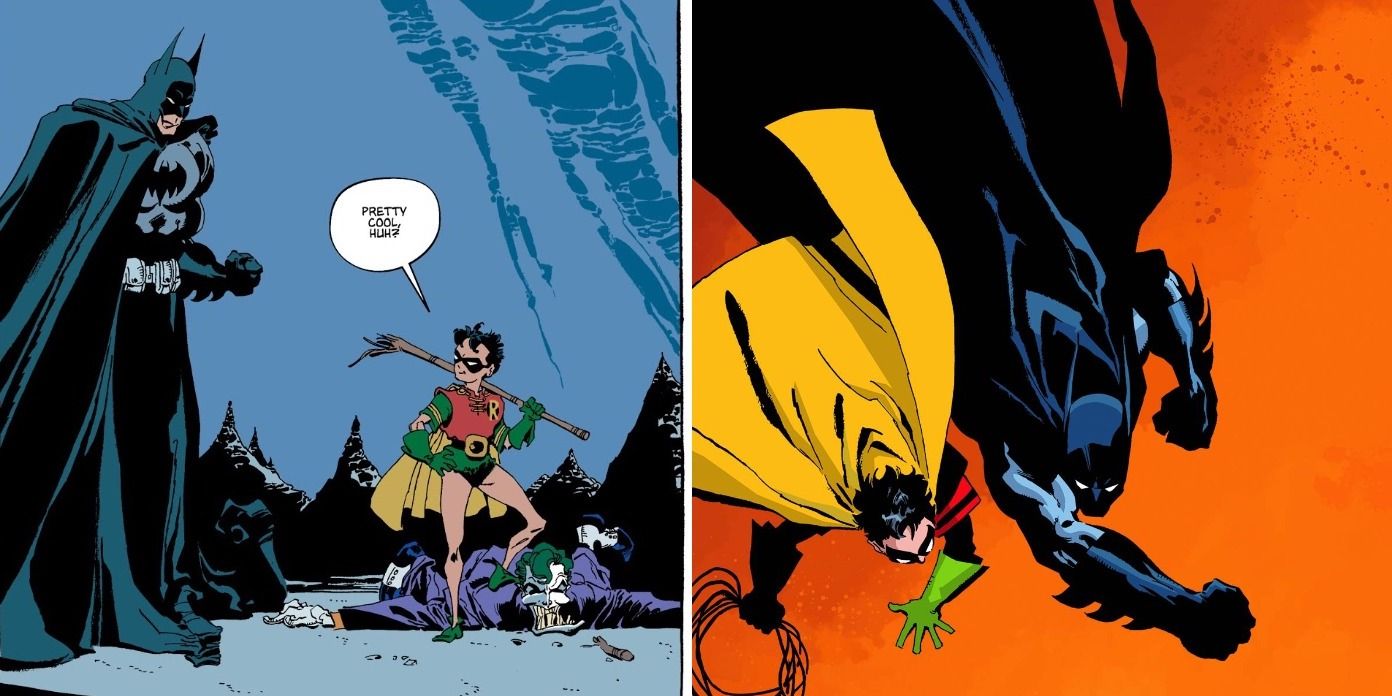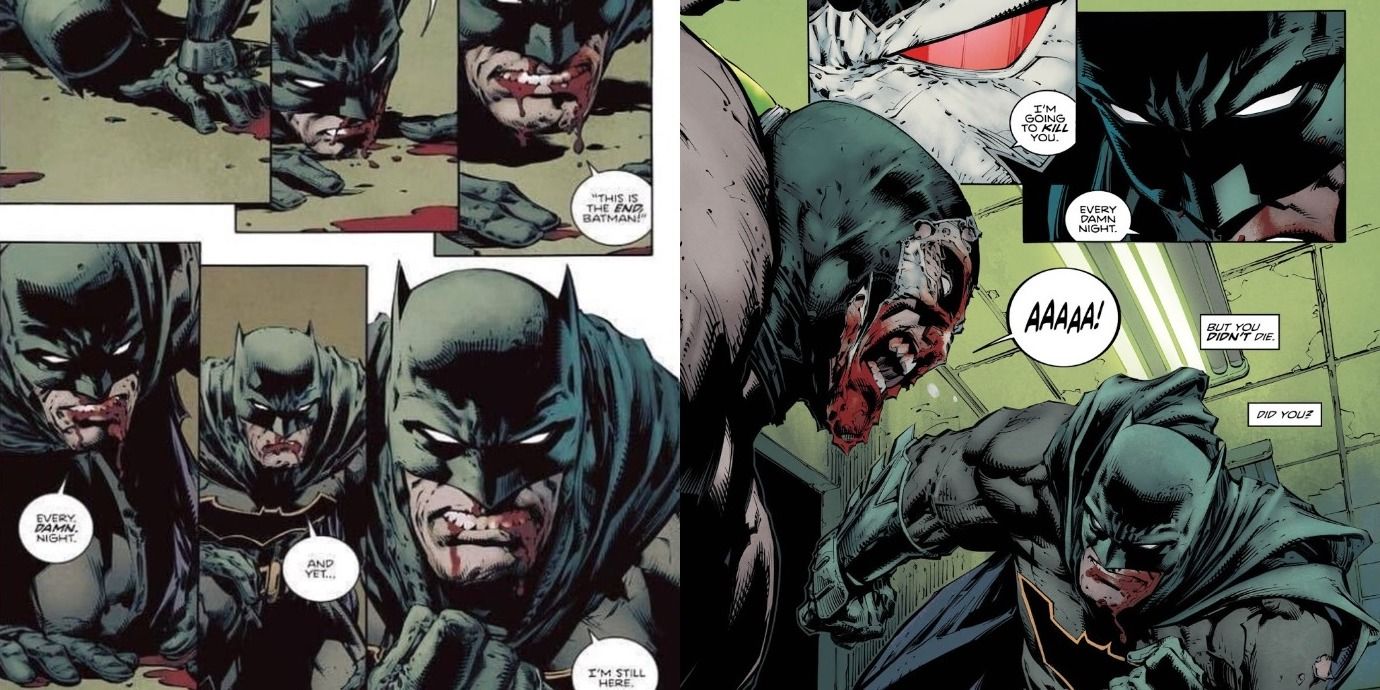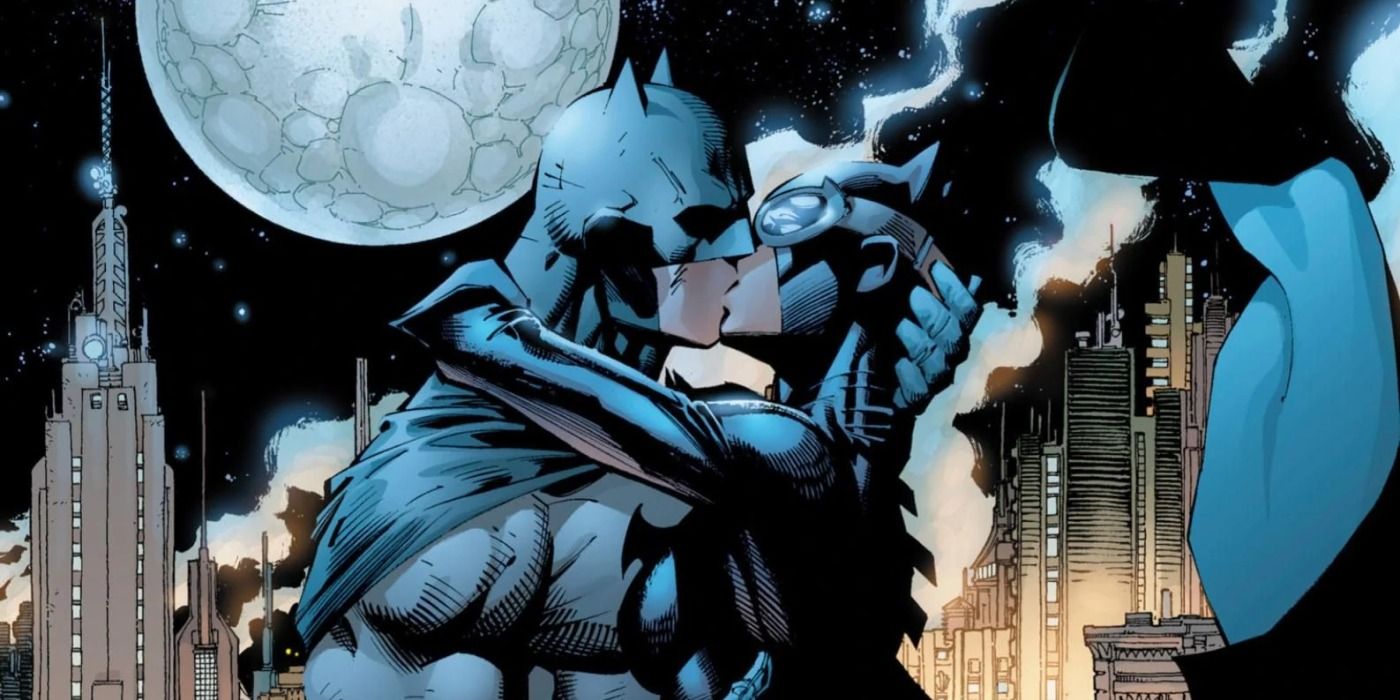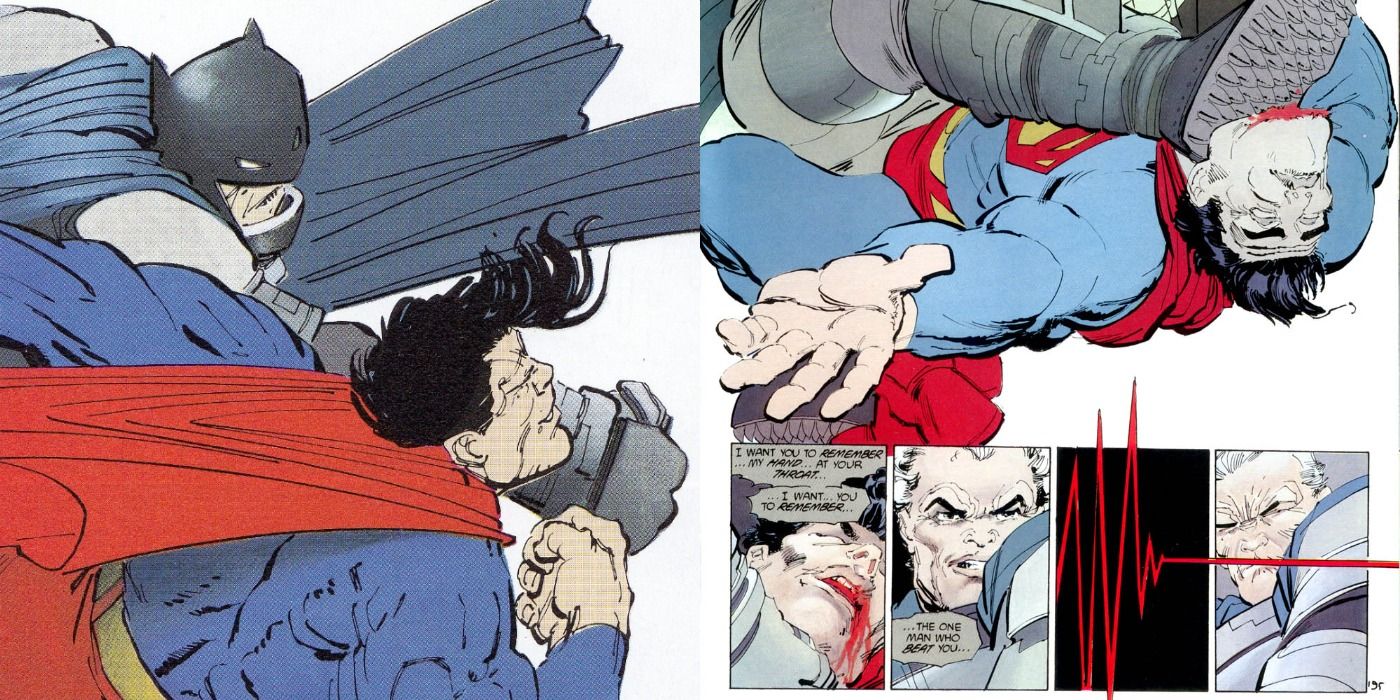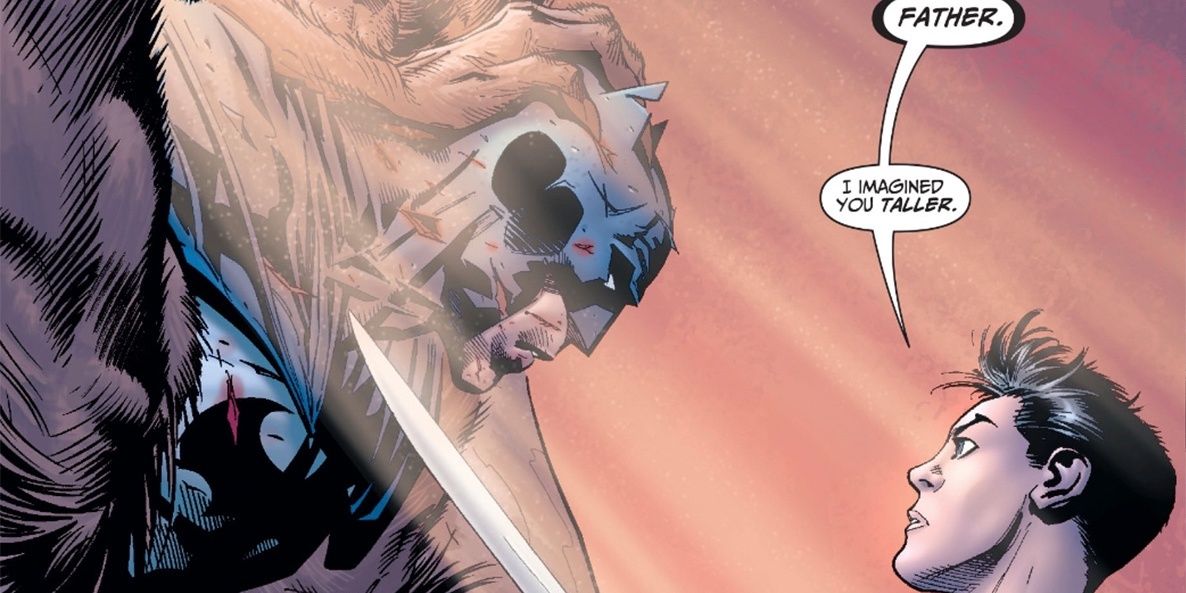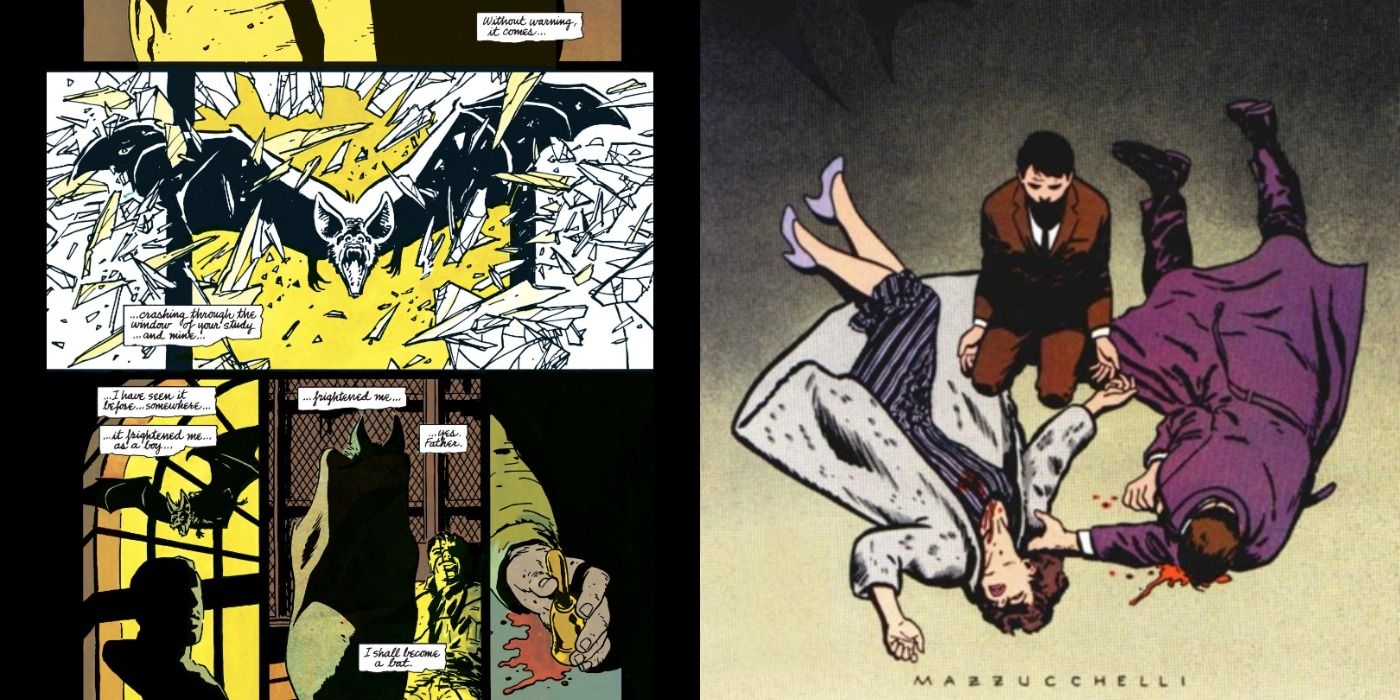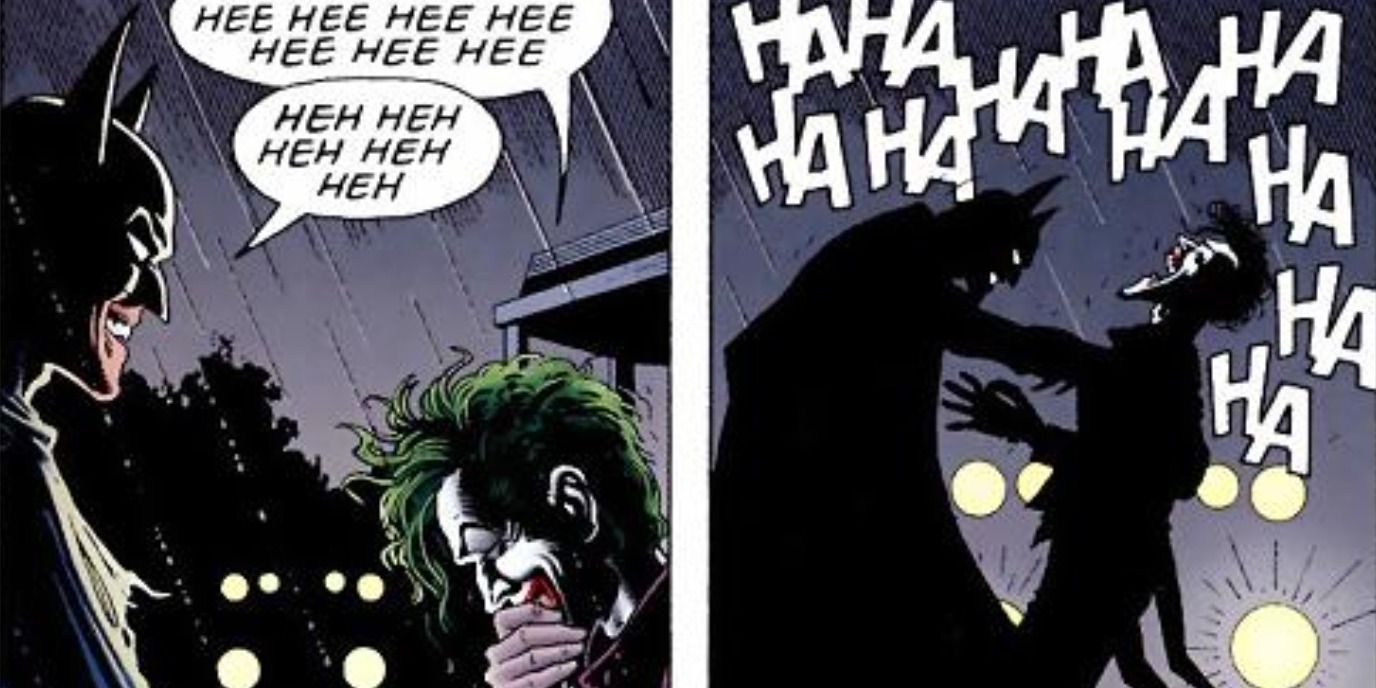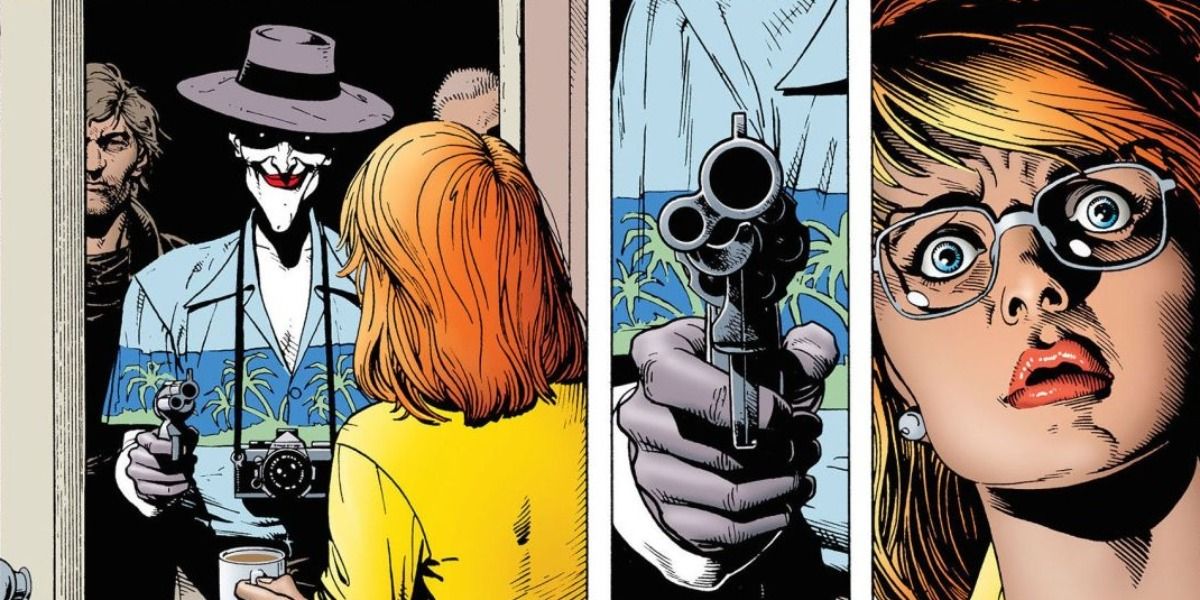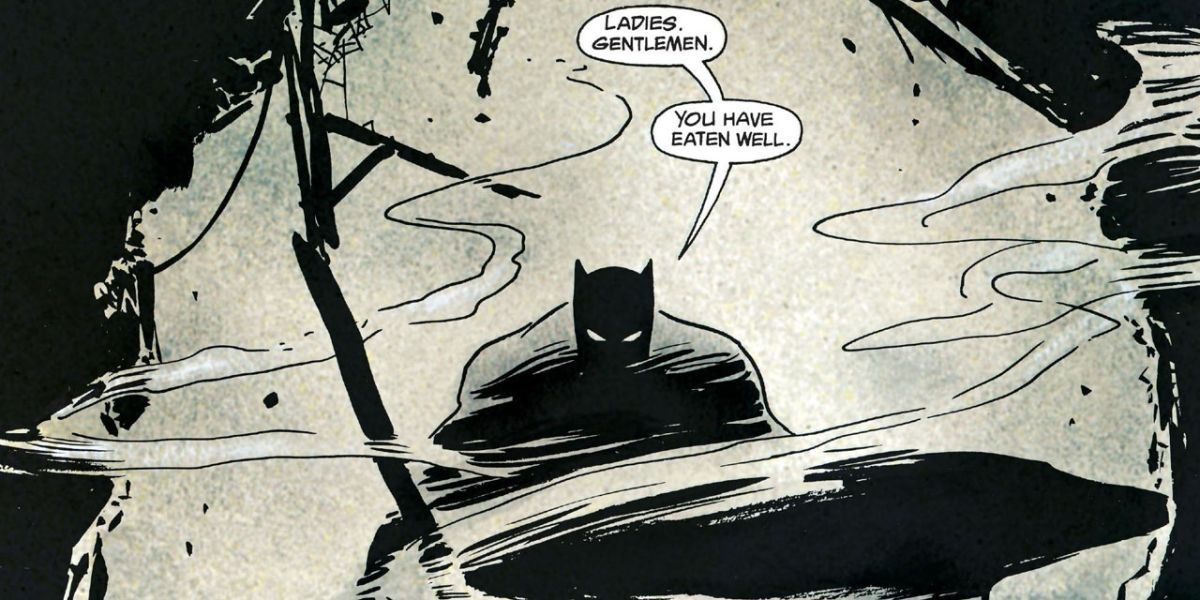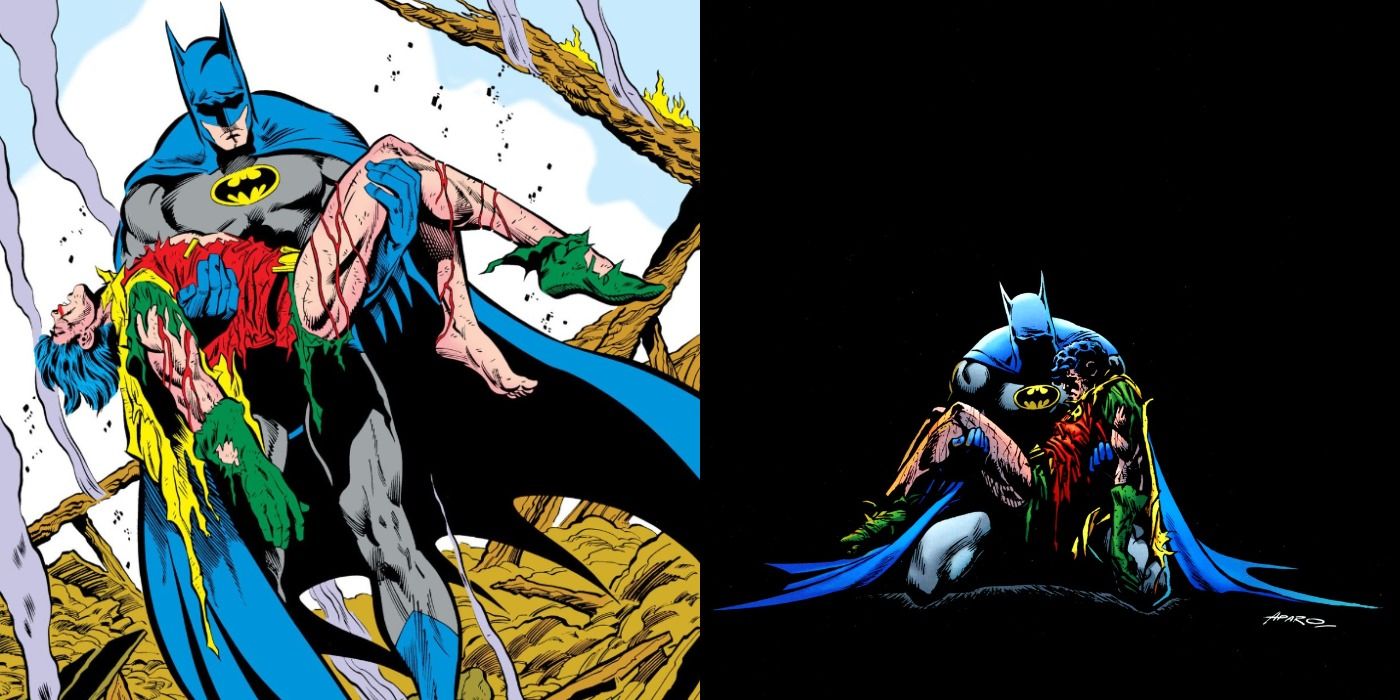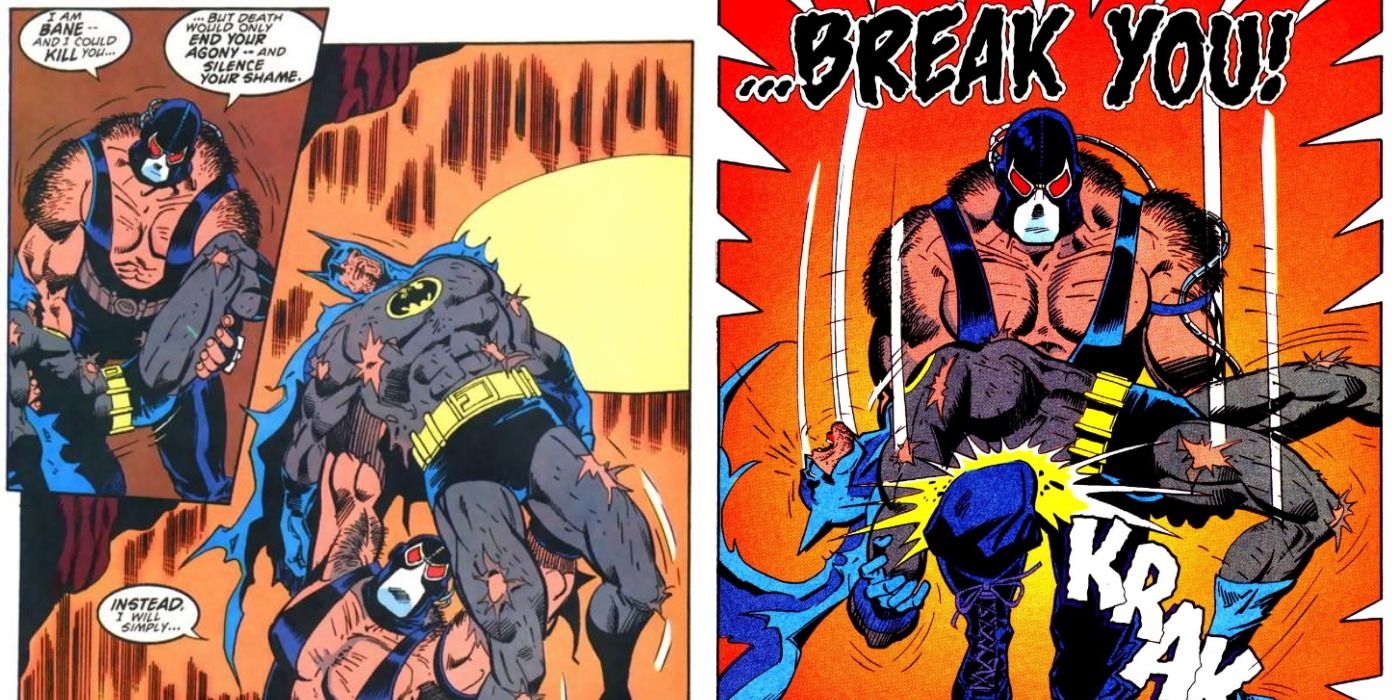DC has had the benefit of attracting some of the best artists for Batman comics. From the likes of David Mazzucchelli to more recent ones like David Finch and Greg Capullo, a notable amount of these artists provided some of the most resonant panels that stand tall in the pantheon of Batman's 80-plus years mythos.
These panels, in some form or another, capture the best of what's so beloved about the Dark Knight, whether in narrative moments of triumph or sorrow. Complemented by some excellent writing in dialogue, each work of art is made all the more striking.
Updated on March 23rd, 2022 by Guillermo Kurten: The best Batman comic panels are some of the most famous from the whole medium. From A Death in the Family to Hush, they each deserve to be highlighted for their impact on comics and pop culture in general.
In The Labyrinth (The Court Of Owls)
This storyline put Batman through a physical and psychological wringer at the hands of the Court and their Talon assassin. The climax of The Court of Owls arc came when the Caped Crusader was thrown into the Court's Labyrinth, forced to spend over a week trying to navigate the maze while the Talon hunted him throughout.
As Batman continually lost grip of his mind, Talon backstabbed him in one of the most vivid panels of Capullo's time drawing the character. The visualization of Batman developing owl-like features along with the detailed crumbling suit, and ragged facial features sell the shock value of this panel well.
"We Have Work To Do" (Hush)
Jeph Loeb returned to Batman after his revered work with Tim Sale on Haunted Knight, The Long Halloween, and Dark Victory in the early 2000s for Hush. This time, he was paired with superstar artist Jim Lee. While this comic wasn't as acclaimed as the likes of The Long Halloween, it still made for an exciting mystery and action-thriller story, and Lee's art has become an iconic trademark ever since.
After Batman lets Catwoman into his life and knows his secret, they team up to uncover the case of this mysterious killer. There's not much dialogue built up for this, as Lee's work carries this scene to make a dramatic exit in true Batman fashion.
Batman Unmasked (Hush)
Hush was a landmark comic in different ways. Even though its mystery didn't match up to the likes of The Long Halloween or Dark Victory, it was still a compelling blockbuster movie-like story in comic book form that served as many fans' first Batman comic. In-universe, though, it was mostly a landmark point for Batman and Catwoman's romantic relationship.
At this point in canon, Bruce never revealed his identity to Selina Kyle, and the notoriously untrusting and paranoid hero made a big leap forward by letting her in. Of course, even now fans are frustrated at the snail's pace in their relationship's growth in the current series, but this step from 2002 was an iconic moment nonetheless.
Orphans (Dark Victory)
While understandably being in second place compared to its immediate predecessor The Long Halloween, Dark Victory is a worthy sequel that gives another solid emphasis on the "detective" aspect of the World's Greatest Detective. However, it also served as another origin story, but this time for Dick Grayson/Robin. In one of the issues of DV, it displays one of the most somber visuals in Batman comics.
After the mob orders the hit on the Flying Graysons as a means of intimidation, the audience flees while Dick mourns the sudden murder of his parents. A lone Bruce Wayne stayed in the stands, quietly standing as if attending a funeral mirroring his own childhood. Tim Sale's use of shadows and shades of red in the few places of color is executed excellently for the sake of emphasis for such a quiet scene.
"Pretty Cool, Huh?" (Dark Victory)
Bruce mourning with Dick from afar is beautifully haunting and tragic imagery, but Dark Victory also does well in capturing an upbeat moment and major milestone in both these characters' lives. The bloody trail of the mysterious Hangman killer was finally having its loose end tied up, but not before the Dark Knight has to deal with Two-Face and his onslaught of hired rogues' gallery members.
While fending off the likes of the Joker in the Batcave, Dick Grayson makes his grand debut in full Robin costume. It's a touching moment of triumph coming full circle from the boy's tragic origins and the birth of the Dynamic Duo.
"I'm Still Here" (I Am Bane)
Fast-forwarding further into the Rebirth era of DC Comics that started in 2016, Tom King's writing during I Am Bane with David Finch's artwork made for a quintessential Batman moment. Following the events of I Am Suicide where the hero intends to put together his own Suicide Squad to defeat Bane, the latter comes back with a vengeance.
Attacking him in his prison in Santa Prisca made things more personal than ever for Bane, and the final bout between the two had one of the best exchanges of dialogue in Batman comics. Battered and bloodied, Batman gets back up, tired of hearing another villain tell him he's finished. After all the rogues claiming to have gotten him on the ropes, he's still here.
The Bat & The Cat (Hush)
Continuing with the Bat/Cat theme, the two eventually find themselves taken to Metropolis during this hectic mystery. The globetrotting adventure Hush spins lead them to fight Poison Ivy and her mind-controlled Superman, but before any of that had to happen, the two find a moment of tranquility.
The two embrace and kiss under the picturesque moonlight on Gotham City's rooftops after an altercation with Killer Croc and the FBI. Jim Lee's legendary artwork turns fans' heads wherever they find it, but this panel is arguably among the most memorable for Batman and Catwoman together.
The Man Who Beat Superman (The Dark Knight Returns)
Before Frank Miller wrote the origin story Year One, he'd already contributed to 1980s crescendo in Batman comics with The Dark Knight Returns. While the former is arguably the most indicative of the character's qualities, TDKR presented an excellent gritty alternate-timeline tale of a more cynical, jaded Batman forced to deal with the bleak politically dystopian circumstances of his time.
This eventually leads him to face Superman, now a government lapdog, in a fight. With Green Arrow's help, Batman defeats the Man of Tomorrow, giving a cathartic scene to remind Superman who put him down.
The Prodigal Son (Batman And Son)
Though Jason's death in A Death in the Family had this kind of impact first, Grant Morrison's run with Andy Kubert on the pencils in Batman and Son greatly influenced the direction and growth of the Batfamily, too. Bruce has definitely not been one to shy away from adopting his children, but this was the first time he's been revealed to have a biological son--without him knowing.
Morrison's writing on the character has been simultaneously criticized for veering too far into the bizarre and supernatural and praised for thrilling plots with twists, turns, and revelations that honor his mythos. And his first meeting with Damian, along with a small piece of dialogue, helped set the stage for this tumultuous relationship.
"Yes, Father... I Shall Become A Bat" (Year One)
As tired of origin stories as fans are now, Frank Miller's seminal Year One was part of the 1980s crescendo in Batman comics. The late Denny O'Neil started the Dark Knight's return to form in the early 1970s, and Miller was one of the writers in the following decade that created a story worthy of Batman's pantheon of comics.
It's a story inspired by his pulpy noir roots and takes a step further, with Bruce's origins reaching an iconic moment as he bleeds out in his own home. He feels dejected at being unable to find his calling and purpose for all the training he's put in. But in that moment of defeat, David Mazzucchelli's artwork emphatically captures this quiet moment of victory in the creation of the Batman.
Two Side Of The Same Coin (The Killing Joke)
In one of the most acclaimed Batman comics of the 1980s, the Joker had another landmark appearance in comics that would come to be the standard for adapting the character across mediums, including The Dark Knight. The villain goes on his own grim crusade "to prove a point," torturing Barbara and Jim Gordon to justify his heinous crimes.
Batman and Gordon manage to thwart the Joker in the end, with the former exposing him for the nihilistic coward that he is. Even still, the Clown Prince of Crime manages to tell an ironic joke that makes even the brooding Caped Crusader laugh. Bolland's art is suitably moody and eerie, with the ominous scene showing that the hero and villain are two sides of the same coin.
Proving A Point (The Killing Joke)
Even though The Killing Joke cemented itself as a comic-book great in Batman's mythos, it stirred its fair share of understandable controversy when he shot Barbara Gordon.
It's a horrifying scene, and his sudden appearance at the Gordons' home is burned into the minds of many fans. From the shadow leaving twinkles in the Clown Prince of Crime's eyes to the ironic tourist wardrobe, Brian Bolland's detailed work, particularly in facial expression, hardly needed any dialogue to drive the bitter impact home.
"No One Is Safe" (Year One)
It's unsurprising that arguably Batman's best comic book origin story has one of the most memorable panels in his catalog. Mazzucchelli's work shines the most in scenes like when Bruce, soon after becoming the Batman, takes the fight directly to Carmine Falcone's doorstep. The scope and scale of the story start perfectly for the character, i.e. dealing with Gotham's first plague in organized crime.
He makes a profound first impression by crashing the crime families' dinner party by cutting the power to the mansion and blowing a hole in the dining room wall from the outside. The art brilliantly accentuates the shadows and dust, creating an eerie veil over Batman. From there, the Dark Knight gives a chilling monologue, making it now known that from that moment on, none of them will sleep soundly.
The Death Of Jason Todd (A Death In The Family)
Another controversial yet classic role for the Joker in the comics of the 1990s, Jason Todd--the second Robin--dying at the hands of the villain in A Death in the Family shaped the trajectory of the Batfamily across different timelines. It's been acknowledged by Batman himself that the upbringing and murder of Jason is his greatest failure.
Jason suffered Joker's grueling torture and emotional trauma from his neglectful mother before dying in an explosive set by the clown, with Batman arriving when it was just too late. Jim Aparo's art of the Dark Knight carrying Jason's lifeless body is haunting imagery, despite the scene being set in broad daylight. While counted as a technicality, Mike Mignola's cover art for the comic also warrants special praise for the darker rendition of this panel.
Broken Bat (Knightfall)
The first titanic battle between Batman and Bane came in the landmark Knightfall arc. This new enemy makes his way to Gotham City with a meticulously detailed plan to dismantle the Bat in body and spirit. Bane orchestrates a mass breakout of Arkham Asylum, letting Batman's biggest rogues run rampant at once, knowing that he won't rest until they've all been rounded back up.
Knowing his identity, Bane breaks into Bruce's home, and infamously breaks his back over his knee. The striking color palette and dramatic spread over an entire page make this an iconic "impact" visual.

